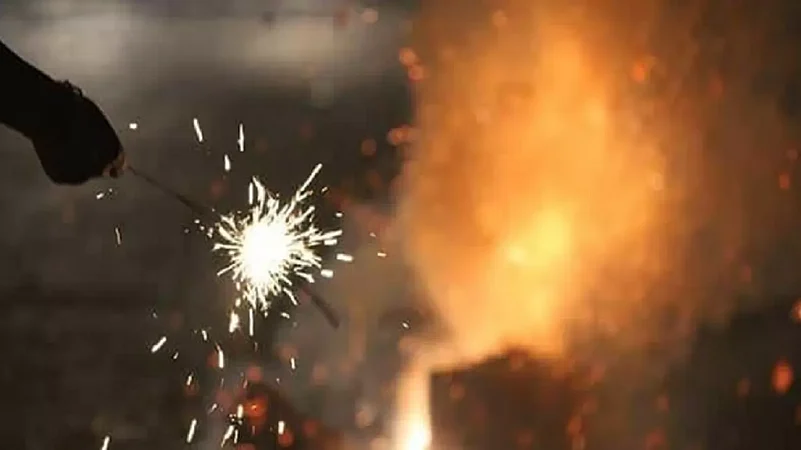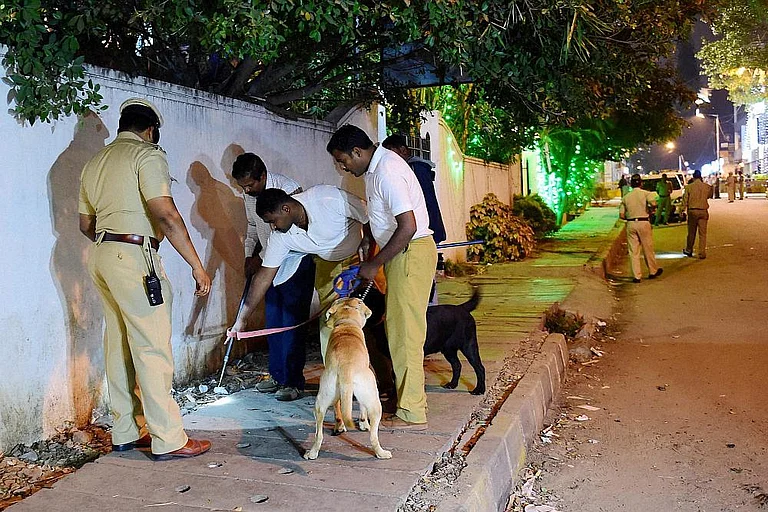As lights and diyas bring the festive cheer to us this Diwali, another part and parcel of these festivities lies in the rising levels of culture-induced pollution that we Indians must brace ourselves for!
In the last few weeks, several state governments have mulled over strict regulation of firecrackers during Diwali. While states including West Bengal and Haryana have permitted the use of only ‘green crackers,’ the Delhi government has imposed a blanket ban on all kinds of firecrackers. The blanket ban has been criticised by many including BJP leaders and several Delhiites on Twitter have urged the government to at least allow the sale and purchase of ‘green’ crackers.
But what are ‘green crackers’ and do they really work? Here’s all you need to know about green crackers and how sustainable they really are!
What are Green crackers and who manufactures them?
Green crackers are dubbed as ‘eco-friendly’ crackers and are known to cause less air and noise pollution as compared to traditional firecrackers. These crackers were first designed by the National Environmental and Engineering Research Institute (NEERI), under the aegis of the Council for Scientific and Industrial Research (CSIR) in 2018.
These crackers replace certain hazardous agents in traditional crackers with less polluting substances with the aim to reduce the noise intensity and emissions. For instance, green crackers are manufactured without barium salts, a key component in traditional firecrackers that gives the green colour when burst. Replacing barium nitrate with better raw materials in green crackers helps in reducing emissions by 30-35%, according to CSIR.
In addition to lowering air pollution, green crackers are said to have a lower sound level than the ordinary crackers—between 110 and 125 decibels as opposed to roughly 160 decibels for conventional crackers.
How can one identify Green crackers?
Presently, three brands of green crackers are available for purchase:
1. SWAS - Safe Water Releaser: These crackers do not use sulphur or potassium nitrate, and thus release water vapour instead of certain key pollutants. It also deploys the use of diluents, and thus is able to control particulate matter (PM) emissions by upto 30%.
2. STAR – Safe Thermite Cracker: Just like SWAS, STAR also does not contain sulphur and potassium nitrate, and besides controlling particulate dust emissions, it also has lower sound intensity.
3. SAFAL – Safe Minimal Aluminium: It replaces aluminium content with magnesium and thus produces reduced levels of pollutants.
All three brands of green crackers can currently only be produced by licensed manufacturers, approved by the CSIR. Additionally, the Petroleum and Explosives Safety Organisation (PESO) is tasked with certifying that the crackers are made without arsenic, mercury, and barium, and are not loud beyond a certain threshold.
Furthermore, green crackers can be differentiated from conventional crackers in retail stores by a green logo printed on their boxes, along with a Quick Response (QR) coding system. This QR code can also be scanned by the customers to check for the authenticity of the crackers, as well as their environmentally sustainable composition.
How did Green crackers become popular?
In response to a petition raising the issue of air pollution affecting public health in 2018, the Supreme Court of India banned the use of firecrackers that are loud and toxic, and advocated for the use of ‘green or reduced-emission’ crackers. Justice M.R Shah remarked that “Every day there is a celebration, but you should also be mindful of the people around you… people who have asthma” while declaring the ban on firecrackers.
Subsequently, after several legal battles coming to the fore demanding a complete ban on conventional firecrackers, the apex court in 2019 allowed bulk manufacturing of green crackers and instructed CSIR to ensure their availability in markets.
To this end, the CSIR has accredited and signed agreements with 230 companies for the production, sale, and storage of green crackers.
What are some of the concerns regarding Green crackers?
First and foremost, it is pertinent to acknowledge that the firecracker industry remains a key employer for the vulnerable. Since green crackers can only be legally manufactured by firms that have signed agreements with the CSIR, no small scale business or cottage business house can manufacture green crackers, which coupled with a ban on traditional fireworks, would leave very many unemployed this time of the year.
Secondly, there is a general lack of awareness amongst both the sellers and the public on how to identify the right green crackers. In fact, experts have cautioned against purchasing green crackers from street vendors as the items may not be credible. For instance, a ground report published in Hindustan Times found that in Lucknow, most crackers being sold in markets were either the conventional ones or fake green crackers since no manufacturer in Uttar Pradesh has yet been certified by CSIR-NEERI to produce green crackers.
Gulsher Azad, member of Lucknow Firecrackers’ Association, told HT that “We have been selling licensed green crackers brought from Sivakashi, Tamil Nadu (in the past) which are yet to arrive (this time).” He also revealed that most customers prefer ‘traditional’ crackers due to a lack of availability of green crackers, or due to their higher prices.
What is Greenwashing and are Green crackers being Greenwashed?
Greenwashing is simply a wordplay on the word whitewashing, and is a practice of making products seem more environmentally friendly and sustainable than they really are. This deceit is achieved through two means– by either intentionally suppressing negative information about the product that makes it seemingly less environmentally damaging than it really is, or by excessively exposing positive information about its environmental sustainability.
Noted Environmentalist Jay Westerveld is credited with coining the term ‘greenwashing’ in 1986. The term ‘greenwashing’ was later officially included in the Oxford English Dictionary in 1999.
Besides low levels of awareness and poor availability, green crackers are simply an ad-hoc band aid solution to the problem of pollution, for they only limit emissions by around 30-35%. In this regard, the National Green Tribunal has directed that green crackers shall, too, be only permissible in cities and towns where air quality is in moderate or poor category.
Essentially, people should refrain from using both traditional and green crackers as both cause pollution, a problem that has been the cause for a literal ‘breath-taking’ winter for Delhiites in recent years.To that extent, one must remember that green crackers are far from being ‘eco-friendly’ per say.


























